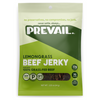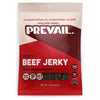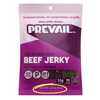Keto Vs. Paleo: What's the Difference?

So you've decided to go keto, or maybe paleo – but which one is right for you? Both of these diets have seen a surge in popularity in recent years as people search for an alternative to the Standard American Diet. But what are the differences between keto and paleo? Read on to find out!
What Is The Paleo Diet?
The paleo diet, also known as the caveman diet, mimics how our ancestors ate. This means eating mostly vegetables, fruits, meat, and fish. It also means avoiding processed foods, dairy, grains, and legumes.
The paleo diet is based on the idea that contemporary food systems, production, and processing technologies are harmful to human health. If you follow a paleo diet to mimic paleolithic hunter-gatherers, you will greatly improve your digestion and enjoy a ton of health benefits.
Grains, legumes, refined sugar, and dairy products are prohibited on the paleo diet.
However, the paleo diet excludes the following foods:
-
Meat and fish
-
Oils such as coconut oil, olive oil, and avocado oil.
-
Eggs
-
Fruits
-
Vegetables — except corn, which is a grain
-
Nuts and seeds
Paleo is more than a diet for most people. The paleo lifestyle is focused on everyday living habits, the environmental impact of food choices, and total body health within the context of this philosophy.
What Is The Keto Diet?

You eat mostly fats, proteins, and non-starchy vegetables on a keto diet.
To reach ketosis — the metabolic state in which your body burns fat for energy — you generally need to consume fewer than 50 grams of carbohydrates per day (though this number can vary depending on your individual carb needs).
This is the macronutrient breakdown of a keto diet:
-
Protein: 10-30%
-
Fat: 65-90%
-
Carbohydrates: less than 5%
Compared to a "normal" diet, the keto diet has a much greater proportion of fat, with moderate protein and relatively few carbs.
The aim of following this diet is to cause a fat breakdown in the body through ketosis. As a result, micronutrient consumption must be tightly regulated; otherwise, you risk derailing your metabolism.
One of the most important reasons for the recent rise in popularity of the keto diet is its promise to aid weight loss and blood sugar management.
What Do These Diets Have In Common?

Although they are two distinct diets, the paleo and ketogenic diets have several similarities. The following are some of the most significant points these diets have in common:
Both Emphasize Whole Foods
Both the paleo and keto diets are based on meals that are composed of 100 percent whole-food ingredients.
A whole food is one that has had minimal amount of processing before reaching your plate. According to both keto and paleo diets, all processed meals must be eliminated in favor of unprocessed foods like fresh vegetables, lean meat, fish, and nuts.
Both Eliminate Grains And Legumes
Another key similarity between the paleo and keto diets is the elimination of grains and legumes.
Grains are a type of carbohydrate that is relatively high in starch and low in fiber. They include foods like wheat, rice, oats, barley, quinoa, amaranth, buckwheat, and corn.
Legumes are a type of plant food that includes beans, lentils, chickpeas, and peas. Like grains, they are also a source of carbs but tend to be higher in fiber than grain-based carbs.
For the paleolithic diet, this restriction is based on the idea that grains and legumes were not part of early human diets and contain antinutrients.
Antinutrients are chemicals, such as lectins and phytates, that may be found in some plant-based foods. When consumed in large amounts, they prevent your body from absorbing minerals and nutrients, resulting in digestive issues.
Like the paleo diet, the keto diet is extremely low in carbohydrates. However, this is due to the fact that grains and most legumes are avoided as well.
Both Eliminate Added Sugar

Added sugar is any sugar or sweetener that is added to food during processing or preparation. This includes white sugar, brown sugar, honey, molasses, corn syrup, and more.
The keto diet eliminates many forms of added sugar in an effort to keep carbohydrate intake low. But allows natural sugars, like honey, date sugar and coconut sugar. The paleo diet also frowns upon added sugar but allows for small amounts of natural sweeteners like honey, maple syrup and coconut sugar.
Differences Between Keto And Paleo Diets
The keto diet prohibits high-carbohydrate foods, including most fruits, while the paleo diet permits more fruit and some natural sweeteners. They also have distinct guidelines for meat, vegetables, and dairy products.
The following sections explore important distinctions between the keto and paleo diets:
Processed Meat
Processed meats, such as bacon, salami, and ham, are generally avoided on the paleo diet since they are produced via modern food processing methods. Some followers of the paleo diet believe that minimally processed bacon without nitrates or preservatives is permissible, while others do not.
Because they may induce ketosis, such meats are permitted on the keto diet. Processed meats, on the other hand, have been linked to an increased risk of cancer and other health problems in studies.
-
Paleo: Focuses on natural and grass-fed, no processed meat.
-
Keto: This allows you to use any meat that does not have added sugar or carbohydrates.
Sweeteners
The keto diet allows for the use of some artificial sweeteners, such as stevia, monk fruit, and erythritol. These are generally considered not to contain any sugar (some products contain both sugar and artificial sweeteners).
The paleo diet does not allow for the use of these types of sweeteners as they are all processed foods.
Paleo: No artificial sweeteners or sugar alcohols.
Keto: Allows for the use of artificial sweeteners that do not contain any sugar.
Starchy Vegetables
Some nutrient-rich vegetables also have a high starch or carbohydrate content. Potatoes, parsnips, carrots, and other "starchy vegetables" are not permitted on the keto diet since they might disrupt ketosis and increase your carb intake.
However, many of these healthy veggies may be consumed in moderation on the paleo diet. A person eating according to a paleo plan can consume sweet potatoes, beets, and carrots in moderation but should emphasize low-carb veggies.
Paleo: Allows starchy vegetables.
Keto: Does not allow the consumption of starchy vegetables.
Dairy
The keto diet does not place any restrictions on dairy products, as long as they are low in carbohydrates. This means that people following a keto diet can consume full-fat dairy products, such as milk, cheese, butter, and yogurt.
The paleo diet has a more restrictive approach to dairy. People following the paleo diet avoid all forms of dairy, but allow themselves certain types of dairy alternatives such as those made from coconut milk or nut milks.
Keto: Allows all forms of dairy as long as they are low in carbohydrates.
Food Lists For Both Diets

The following sections provide a list of foods that are permissible when on the keto or paleo diet.
Keto Diet
Common foods that people eat when following the keto diet include:
-
fatty fish like salmon, tuna, or sardines
-
poultry
-
avocados
-
eggs, especially egg yolks
-
healthy fats and oils; Avocado oil and other oils, such as olive oil and nut oils, are good options.
-
nuts like macadamia nuts, walnuts, peanuts, and almonds
-
seeds, including chia seeds and flaxseed
-
butter, ghee, or cream
-
plain Greek yogurt with no sugar or fruit
-
fatty cuts of meat
-
game meat
-
berries, including raspberries, blueberries, strawberries, and blackberries
-
leafy greens, asparagus, olives, cruciferous vegetables, celery, squash and mushrooms, bell peppers.
-
plain cottage cheese
-
coconut or cocoa butter
-
baking chocolate with at least 70% cacao and minimal natural sugar addition
-
nut butter, including almond butter that contain no added sugar
-
cheese
-
lemons and limes
-
tomatoes
Paleo Diet
Common foods that people eat when following the paleo diet include:
-
pork
-
beef
-
game meat
-
Leafy greens, celery, asparagus, peppers, and cruciferous vegetables
-
nut butter
-
cocoa butter
-
dark chocolate with at least 70% cocoa
-
coffee with no dairy cream or refined sugar
-
chicken
-
eggs
-
seafood
-
Salads made with starchy vegetables, such as potatoes and root veggies, include dandelion salads.
-
fruit, emphasizing berries, tomatoes, citrus, and other lower sugar fruits
-
small or moderate amounts of higher sugar fruits, such as grapes and bananas
-
nuts
-
teas
Summary
So what's the difference between a paleo diet and a ketogenic diet? Although both may be good for your health, paleo is more likely to provide a greater selection of healthy choices. Keto may be difficult to follow, and some people could have trouble maintaining it.
If you're thinking about making a change to your diet, speak with your doctor or registered dietitian first. They can help you determine which of these diets is right for you.











